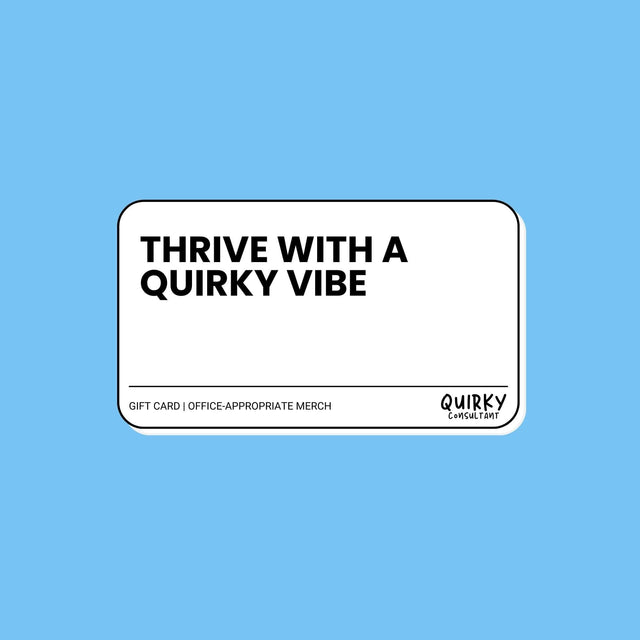Perfect passion: Matt Chambers’ remarkable new motorcycles

This article was written by Benjamin Davison.
The motorcycle is a unique element of American culture. Rumbling and aggressive, the American hog is associated with a rebellious and uncompromising attitude. Riders are perceived as vaguely dangerous, mysterious, self-possessed men and women who follow their own rules and live life without compromises. But like so much else in American life, the classic motorcycle is changing, evolving away from the echoes of the past, and moving toward a better future. Matt Chambers, the founder of Curtiss Motorcycles, is driving this change forward with his innovative, almost spiritual reinvention of this classic American vehicle.
An American story: Matt Chambers and Glenn Curtiss
The story of Matt Chambers and Curtiss Motorcycles begins in Louisiana, where Chambers practiced law as a trial attorney. After winning an extraordinarily large settlement in a case, Chambers decided to shift his energies from the practice of law to his life’s real passion of motorcycle building.
Chambers’ entry into motorcycle building began in the early 1990s. Japanese auto manufacturers were beginning their conquest of the American market. Chambers’ experience as the owner of an Infiniti Q45T convinced him that American manufacturing needed to begin thinking in new ways. The Infiniti outperformed and outclassed anything available from American manufacturers at the time. A passionate motorcyclist, Chambers realized that his Harley-Davidson bikes were outstanding in many ways but very “pickup-truck-esque” in others. After this realization, he began evaluating his treasured American and European bikes in terms of what the Japanese had accomplished in the Infiniti. His goal: to retain the essence of the beast — power and freedom — while elevating the design to a new level and smoothing out the rough edges of ridership. The core tenet of Chambers’ motorcycle philosophy is that a bike should be built with an uncompromising dedication to perfection for the rider. The motorcycle should become an extension of the rider. Riding should be almost meditative, a zen-like state of unification between man and machine. This idea underpins everything that Chambers does at Curtiss Motorcycles.
The Curtiss philosophy
Curtiss Motorcycles is not your father’s bike company. First, their approach to dealing with vendors and suppliers differs from many major manufacturers. While a bulk manufacturer may be willing to accept certain tradeoffs in their supply chain — e.g., somewhat lower quality steel at a better price — Curtiss pays what it takes to get the absolute best materials. Its manufacturing processes are also based on the notion that quality should be the grandfather of all concerns. Curtiss’ parts are milled from solid material blocks rather than using mass-produced parts that are bolted together on an assembly line. The result? A bike that is lightweight, slim, and durable. The milling process reduces the likelihood of metal fatigue and leads to a bike that will be in your family for generations. While many vehicles are manufactured with planned obsolescence in mind, a Curtiss is built to last a lifetime — possibly several lifetimes.
Of course, all of this attention to detail and refinement does add to the cost of a Curtiss motorcycle. But buying a Curtiss is a decision that transcends cost: you buy a Curtiss because it is the best bike on the market, not because it has a favorable number on the sticker. One of the differentiating factors that make Curtiss’ bikes so distinctive is the company’s commitment to sustainability. Unlike many executives who are riding the sustainability trend and greenwashing their companies, Chambers is sincere when he says that sustainability is a core element of Curtiss’ identity. By creating each bike as a bespoke work of art and manufacturing bikes designed to outlast their riders, Curtiss is elevating sustainability to a new level. The absence of an internal combustion engine means that the Curtiss is not dependent on fossil fuels or engine oil. The milled-from-solid construction means that your bike won’t require new parts every few years. And the fact that their bikes are engineered to last means that you won’t have to trade in your bike for a new one every few years to keep up with trends. A Curtiss motorcycle is built to help the rider escape from the endless consumerist cycle of buy-and-replace.

Transcendentalists' motorcycle club
American folklore tends to associate motorcycle riding with freedom and an escape from the bonds and rules of everyday life. However, in a classic twist of irony, riding a traditional motorcycle chains one to a certain set of inescapable realities. Motorcycles need gasoline and oil; they tend to be loud and hot. The vibration, noise, and heat from the motorcycle consume attention, using up valuable cognitive bandwidth that, in an ideal world, would be used to enjoy the ride. Not to mention the inherent needs of the internal combustion engine: riders have to worry about fuel, oil, valve timing, and spark plugs. For a machine designed to facilitate a sense of freedom, a motorcycle has a way of chaining you to certain inescapable realities. If you want to go for a 2 AM ride on your Harley, your neighbors might have some choice words to say when you fire up your hog in the middle of the night and roar out of the neighborhood.
Curtiss’ bikes are all about transcendence and escape. The design and construction of the bike are unique from the ground up, and so is the rider’s experience. Riding a Curtiss is a whole new way of biking. When you are on a Curtiss, you’re experiencing a whole new dimension of motorcycling. It is you and the bike, whisper-quiet, merged into one entity as you head down the highway to destinations unknown. A Curtiss motorcycle is for a biker ready to experience a new kind of freedom, an escape from the rumble and snort of traditional bikes. Curtiss riders are the next evolution of bikers, mature men and women who want a refined and elegant bike that feels more at home in yoga class than at a roadhouse. You can escape your world, and you can escape the stereotypes that the world imposes on you.
Despite this refinement and elegance, Chambers admits that he sees something Bond-like in the Curtiss One, the company’s flagship bike. The One is understated, slim, and somehow timeless; it would fit in 100 years ago and will still be stylish in 2121. And despite that timeless essence, the One has an aura of power about it. Not aggression of the sort that many classic styles evoke; there’s no anger in the One, but rather, a calm competency, much like the famous Mr. Bond. The famous spy and the Curtiss One are both self-possessed with the simple knowledge that they have no equal.
While the Curtiss One is, in fact, a remarkably accelerative ride, the bike isn’t about flaunting that power. It’s about enjoying something fine, experiencing the beauty of a machine doing exactly what it was designed to do. Riding the One is a luxurious experience. The comfort of traditional motorcycles is hindered by the fact that the design inherently has some limitations. The needs of the bike come first. Not so with the One. Chambers’ team designed the bike with the rider in mind and then engineered the motor and chassis around that. The One was designed to provide the rider with a next-level experience of comfort and performance from the ground up.
Chambers learned a lot about building performance bikes during his time running the custom bike company Confederate Motorcycles. Confederate spent considerable time and money developing ever-more-powerful motorcycles but had difficulty designing a bike and engine combination that could exceed 165 horsepower. Eventually, Chambers concluded that internal combustion was beginning to reach its limit. That insight was crucial to the development of the One. The exquisitely designed motor on the One puts out about 217 horsepower and can produce 272 lb-ft of torque, almost as much as some light trucks. As it turns out, the One hides a remarkably powerful engine in those sleek, timeless lines.
Although the One is powerful, Chambers doesn’t want to see riders out doing wheelies. “People don’t buy Rolls-Royce Phantoms and do burnouts in Manhattan in their Phantom,” he explains. His vision is that the One will inspire owners to a certain discipline or sense of responsibility. A motorcycle with the kind of power that the One has requires respect and discipline. Before pushing the limits on the One, Chambers suggests owners “take time to let the seasoning soak into the gumbo.” In other words, get to know your bike and take time to build confidence before you open the throttle on some back-road straightaway.

The right man at the right time
Matt Chambers has been in the motorcycle business for more than 30 years now. While his concept has always been to produce small-batch luxury motorcycles, he says that the early days at Confederate were much more rough-and-tumble because he didn’t know anything yet. Chambers admits that he made some mistakes during that time, but he also believes in the fail-forward philosophy, meaning past lessons have been integrated into today’s Curtiss Motorcycles. Curtiss focuses on producing each bike to the highest standards of perfection, an ideal that Chambers will never let go of. To him, motorcycling expresses the optimism, beauty, and innocence that sets America apart from the world. Each bike is an expression of mankind’s dreams, reflective of the person riding it. He’s a competent professional with decades of experience in the motorcycle industry, but he is also a devoted biker, and that makes him the right man at the right time for Curtiss Motorcycles.
A lot of Chambers’ inspiration for his bikes comes from his company’s namesake, Glenn Curtiss. Glenn Curtiss is widely known as a pioneer of aviation, the father of naval aviation and an extraordinary pilot. But before launching the world into naval aviation, Glenn Curtis was a motorcycle man. His tinkering with motorbikes began around the turn of the 20th century when he bought a less-than-optimized engine kit for his bicycle and began learning how to improve it. Eventually, he pioneered the development of the V-twin motor and continued devising improved engines for motorcycles. In 1903, he set a land speed record when he sustained a speed of 64 miles per hour over one mile. In 1907, Curtiss set an unofficial record of 136 miles per hour on a motorbike powered by a V8 engine of his own design.
The use of an innovator like Curtiss as the company’s namesake was a deliberate choice by Chambers. Electric motorcycles have been around for a while, but much like electric cars, they tend to be uninspired and bland, an electric motor bolted onto a regular-looking chassis and maybe some halfhearted marketing. Chambers realized that there was likely a solid market of people interested in high-performance, electrically driven motorcycles and that this group of consumers needed an inspiring focal point to rally around. In much the same way as Elon Musk’s Tesla provided drivers with a viable, high-performance electric car, Matt Chambers’ Curtiss One is providing the motorcyclist of today with a sleek and powerful electric bike.
And yet, unlike Musk and Tesla, Chambers’ vision for his customer is to return them to a simpler time. That’s not to say the design of the bike doesn’t use the best technology available. Indeed, the motor and power system in the Curtiss One is a marvel of engineering: the motor’s cylindrical shape and internal axle setup are revolutionary and provide a more natural and well-balanced ride compared to traditional bikes, which are organically out of balance. However, the bike itself dispenses with fancy control systems and elaborate gimmicks. It is simple yet bespoke. In a world of constant digital interruptions, a world where kids are handed a tablet at age two and then bombarded with an endless stream of sensory input forever, Chambers envisions an experience free from the ongoing distraction of the world. A ride on the Curtiss One is a meditative experience, a melding of driver and machine, an opportunity to sign out from the continuous distractions of our digital age and truly engage with the world around you.
Bike of the future, rooted in the past
Can Chambers’ idea ever truly come to fruition? Will today’s youth appreciate the simple elegance of going for a ride on a vehicle without entertainment systems and climate control? Absolutely. The Curtiss One is built to last, to become a family heirloom. While it might be popular to complain about today’s youth, they are far savvier than people give them credit for. A bonafide product designed to work well forever stands out from the rabble in a world powered by fake authenticity and marketers scrambling to get kids engaged with the right keywords.
Even in the face of massive change, Chambers sees a place for the Curtiss One in the decades to come. The future of transportation is trending toward automation in many ways. Still, even today, where every car has a six-speed super-optimized computer-driven shifter, some people like to drive stick. Even in the future, when road networks are divided into performance pods and traffic is algorithmically controlled, Chambers can see Curtiss riders cruising down back roads and whipping along highways, splitting lanes between autonomous cars, and relishing the thrill of having a real, meaningful experience. This is the essence of Curtiss Motorcycles: real freedom without pretense. No planned obsolescence, no adherence to the trend of the day. Just a good bike and a happy rider, running the roads as one.





0 Comments
Nobody's told us there thoughts about this article. Tell us yours below.